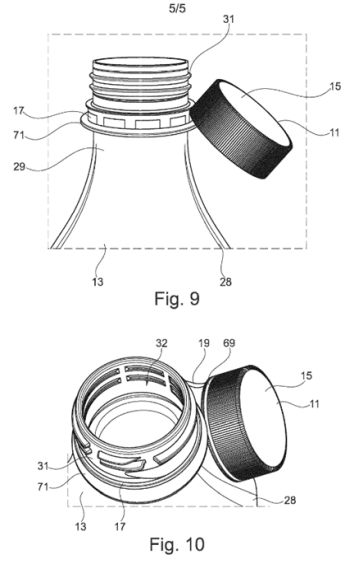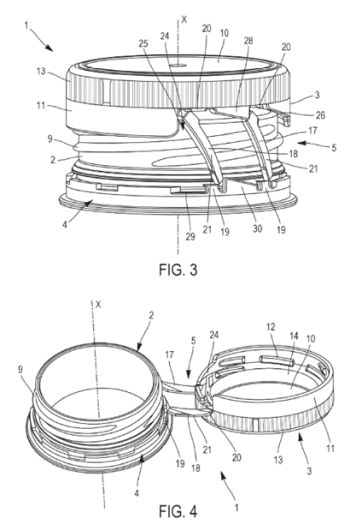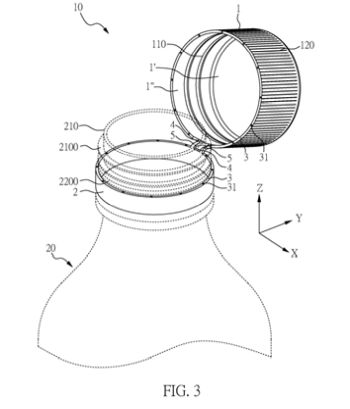The plastic caps and lids used for beverage containers are among the single-use plastic items most commonly found on beaches in the European Union. The increasing use of plastics for only short-term purposes, without the possibility of reusing or recycling them in a cost-effective way, makes their production and usage models inefficient and linear. This is so especially in the light of Directive (EU) 2019/904 of the European Parliament and of the Council, issued on 5 June 2019, which aims to reduce the environmental impact of certain plastic products by reducing waste and preventing it from entering the environment, and in particular the marine environment.
The European strategy for plastics aims to establish a circular economy in which the design and manufacture of plastics and plastic products takes into account the needs for reuse, repair and recycling and promotes more sustainable materials. The EU Directive is implemented by the Polish Act on the obligations of entrepreneurs with regard to the management of certain waste and on the product fee, for which an amendment was signed by the President of Poland in April this year.
The new obligations in relation to beverage containers and bottles are a result of stricter environmental regulations and a reduction in the amount of waste created in the production and use of beverage containers. According to the new regulations, for beverage containers with a capacity of up to three litres, manufacturers must use plastic caps and lids affixed to the containers during the intended use of the beverage. This eliminates single-use caps, which are a huge environmental problem as they do not decompose easily and can cause high pollution of the environment, including oceans and beaches. The adoption of the new legislation aims to keep the environment clean and prevent further pollution by plastic waste.
Modern caps are designed to make the recycling process easier and more efficient. In addition, the innovative technological solutions and materials used to produce the new types of caps lead to more sustainable production and to a waste management that is less of a burden to the environment.
Patent application no. PCT/EP2022/065401 by ALPLA WERKE ALWIN LEHNER GMBH & CO. KG of June 2022 describes a closure cap closing the outlet opening of a container. The closure cap consists of three main parts: a threaded cylindrical part, a securing ring (17) to prevent opening, and a retaining strap. The threaded part has an internal thread that can connect to the external thread on the neck of the container. The securing ring is designed to remain on the protrusion formed on the neck of the container, and the retaining strap has two ends.
In the unopened state, the retaining strap is placed between the threaded part and the securing ring (17) and extends around the securing ring in an arc with a first angle of from 30 to 50 degrees. This design ensures that the retaining strap does not interfere with the opening process, allowing the threads to interact freely. In addition, break points are placed in the threaded part, where the threaded part and the securing ring overlap.

The claimed solution is shown in the drawing (source)
From patent description EP 3 670 377, dated 17 December 2019, granted to the Spanish company Betapack S.A.U, an invention is known for a bottle capping device that maintains a cap connected to a container, which prevents the cap from being lost in nature.
The capping device 1 is intended to be affixed to the neck of a bottle or another container to seal the opening on the neck 2. It consists of a lower ring 4, a cap 3 and a connection device 5, which connects the cap 3 to the lower ring. The cap 3 has an upper wall and exterior peripheral skirt 11 with a spiral thread 12 that allows the cap to be screwed or unscrewed on the neck 2. The connection device 5 consists of two parallel arms 17 and 18, which connect the exterior peripheral skirt to the lower ring 4. These arms have a circular spiral shape that straightens as the cap 3 is unscrewed, allowing it to be opened. The arms extend around the X axis in two partially overlapping angular sectors.

The claimed solution is shown in the drawing (source)
Another solution, known from patent description PL/EP 3277598 granted in 2020 to US creator Michael Maguire, is a cap that remains connected to the container when the container is open, which prevents the cup from being accidentally dropped, discarded or lost. In addition, these connected caps have the added benefit of not becoming soiled or contaminated by contact with the ground or other surfaces, which increases their usefulness and reduces their environmental impact. The movement of the cap is restricted, preventing disturbance to the user, and at the same time the cap remains in an open state when desired. In addition, it is easy to bring it back to a closed state, which helps to keep freshness and prevents it from being accidentally dropped or lost.
The described invention relates to a cap 10 for a container, the cap comprising a main body 1 and a ring member 2. The ring member 2 is separated from the main body 1 by a first incision line 3. Along the first incision line 3, a plurality of connecting pins 31 are located to connect the main body 1 and the ring member 2 on two sides of the first incision line 3. The two ends of the first incision line 3 are separated by a plurality of connecting portions 5, which connect the ring member 2 to the main body 1.

The claimed solution is shown in the drawing (source)
The development of innovative solutions for bottle caps offers several important advantages. Firstly, it helps to reduce the amount of plastic waste that is generated by bottles and containers for beverages. Secondly, innovative caps can help prevent accidents, especially involving children. Sometimes traditional caps can be too difficult to open, leading to attempts to use force, which can result in minor injuries. Thirdly, innovative caps can improve user experience. They can be designed in a way that makes bottles and containers for beverages easier to use and more durable and safe. Finally, innovative caps can be a source of competitive advantage for companies that will launch them. Innovative products often attract customer attention, which can translate into increased sales and profits for companies.
The content of this article is intended to provide a general guide to the subject matter. Specialist advice should be sought about your specific circumstances.

